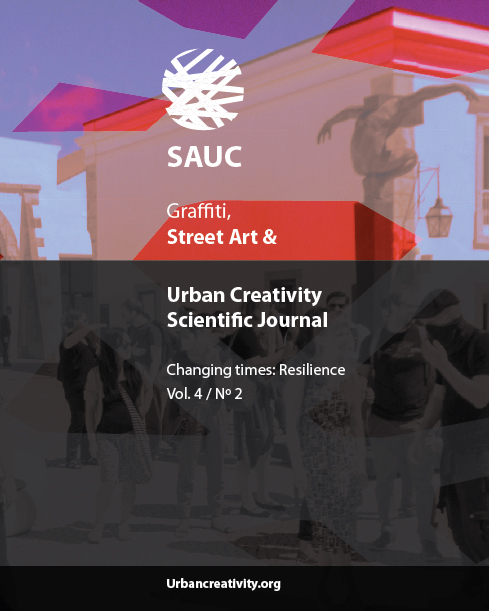The commodification of alternative cultural spaces
DOI:
https://doi.org/10.25765/sauc.v4i2.145Keywords:
Commodification, creative city, industrial clusters, Lisbon, aesthetization, alternativeAbstract
The commodification of “alternative” cultural spaces is a process that has started to take place in several European cities, like Lisbon, for instance. This has happened due to the pressure of the real estate market, tourism trends or the austerity measures imposed by Troika, during the global economic crisis (2008). It is in this context that a specific real estate agency acts in order to create an opportunity for its business, investing in the rehabilitation of buildings and revitalization of certain areas of the city (interstices), supported by decorative aesthetics and an architectural design inspired by cultures of resistance. This strategy of territorial and decorative investment has had a big impact in the city of Lisbon. The reuse of images, buildings and practices related to “alternative” environments leads to the aesthetization of certain architectures – particularly those which host creative and cultural projects, and whose designs and marketing strategies distort political or social meanings.
Downloads
Global Statistics ℹ️
|
237
Views
|
0
Downloads
|
|
237
Total
|
|
Downloads
Published
How to Cite
Issue
Section
License
Those authors who publish in this journal accept the following terms:
-
Authors retain copyright.
-
Authors transfer to the journal the right of first publication. The journal also owns the publishing rights.
-
All published contents are governed by an Attribution-NoDerivatives 4.0 International License.
Access the informative version and legal text of the license. By virtue of this, third parties are allowed to use what is published as long as they mention the authorship of the work and the first publication in this journal. If you transform the material, you may not distribute the modified work. -
Authors may make other independent and additional contractual arrangements for non-exclusive distribution of the version of the article published in this journal (e.g., inclusion in an institutional repository or publication in a book) as long as they clearly indicate that the work was first published in this journal.
- Authors are allowed and recommended to publish their work on the Internet (for example on institutional and personal websites), following the publication of, and referencing the journal, as this could lead to constructive exchanges and a more extensive and quick circulation of published works (see The Effect of Open Access).













